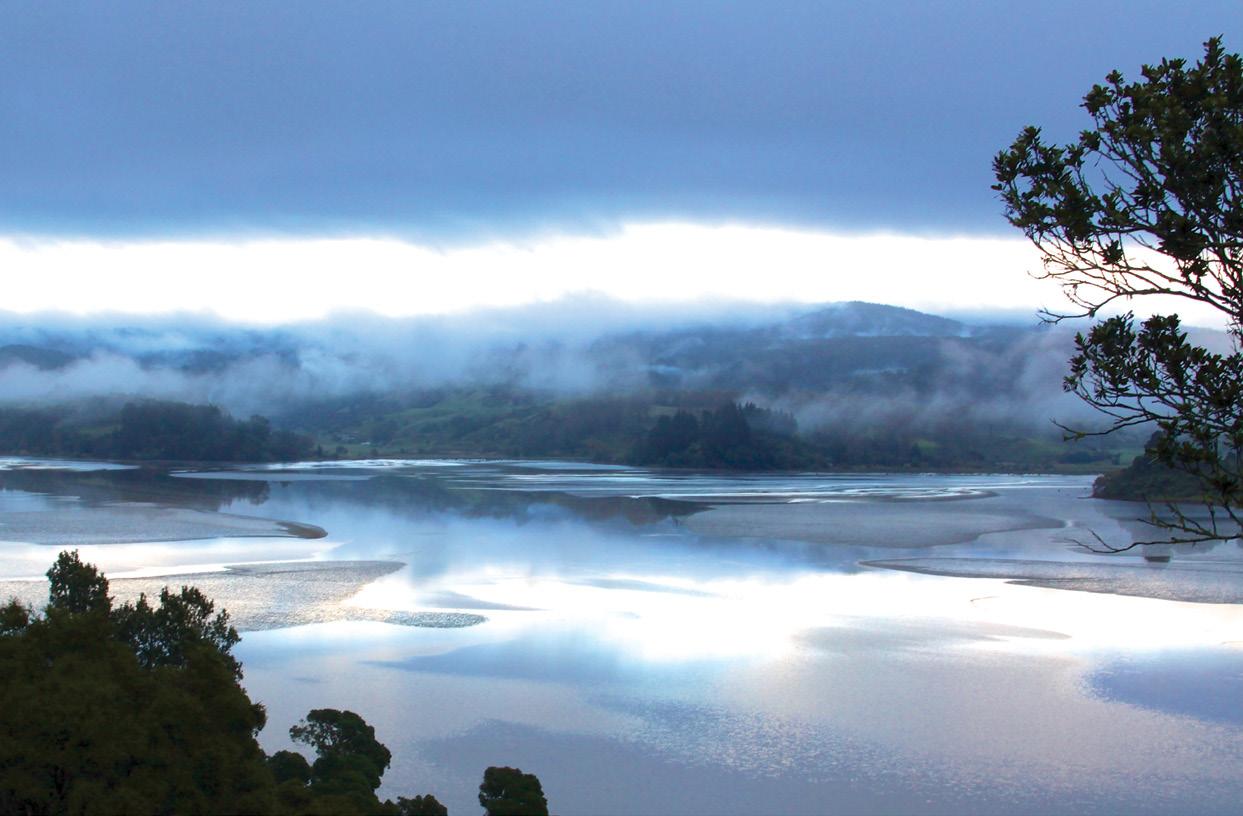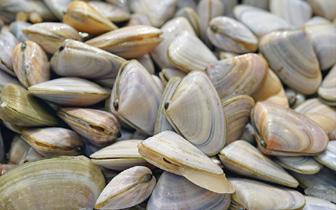
4 minute read
Customary Fisheries Report
Mussel restoration in Ōhiwa Harbour
In 2016 Dr Kura Paul-Burke surveyed the mussel beds in the harbour and found an alarming decline in mussel numbers and bed extents since previous surveys. The sudden decline was largely attributed to seastar predation.
Advertisement
Kura then put together a plan to trial methods of re-establishing mussels in the harbour. The use of cages that this plan involved required a resource consent. This was granted in July last year and the implementation of the plan in October. The project is co-funded by BOP Regional Council and Taihoro Nukurangi (NIWA). The aims are to assess: • Whether mussel spat from Ohiwa can be collected on lines in the harbour. • Whether relocated mussels survive and recruit on the bottom.
• Whether cages provide respite from seastar predation. • Options for assisting mussel restoration and replication on a large scale.
Kura reported back to the Ohiwa Harbour Implementation Forum (OHIF) on the progress of the trial.
At that time:
• Mussels relocated from mooring chains to the cages did re-establish on the harbour bed.
• Seastars did eventually find their way into the cages to predate the mussels. • Wild mussel spat did establish on both artificial and natural fibre spat lines. • A Master of Marine Science Student, Megan Ranapia, has been seconded to develop a Habitat Suitability Index for shellfish restoration.
• A funding proposal, co-developed with Upokorehe and Ngāti Awa has been made to the Sustainable Seas National Science Challenge, Sustainable Seas, Awhi Mai-Awhi Atu.
The application to Sustainable Seas has since been successful and a Putea of $1.2million has been allocated to this project to cover research into the cause of mussel decline in Ohiwa Harbour.
Kura and her team are continuing to monitor the spat lines and cages and will update OHIF on progress from time to time.
Pipi and Cockle populations in the Ōhiwa Harbour
The importance of addressing the seastar proliferation and its effect on the mussel population is that if allowed to run its course, the seastar will turn their attention to the pipi and cockles.
As Kaitiaki, we keep a watchful eye on the pipi and cockle population in the harbour and have noticed the proliferation of small cockle. At the moment they are tiny in size. Hopefully they will grow to a harvestable size.
Recently the shellfish survey was carried out by Ministry of Primary Industries (MPI) on the health of shellfish population along the countries’ shoreline. Data was collected from 2012-2018.
A large number of diebacks has been reported. A clear cause of this has not been identified however it is assumed warming waters, pollution and toxins, increased sediments etc impact on shellfish health.
In our Rohe Moana we keep a watchful eye on harvest numbers that our fishers take when issued with customary permits. This information is fed to MPI who use it to contribute to the make-up of national fish plans.
Customary/Commercial Kina plans (SUR 1B)
In the new sustainability rounds this year, commercial quota holders applied to the Minister for Primary Industries for a 50 tonne SUR 1B TACC increase.
The Commercial fishers believe that kina stocks are such that they can sustain an increase in quota allocation.
Iwi submitted an objection to any increase to the Minister as proper science methods haven’t been applied to reach a true informed decision. Iwi insisted that a full stock assessment should be carried out to give a reasoned picture of the kina stocks in our rohe. Iwi believed that any increase in TACC would detrimentally affect iwi’s ability to provide our taonga kaimoana to feed ourselves and our manuhiri.
On the 1st October the Minister issued the following statement. • SUR 1B TAC = 324 tonnes (status quo) • SUR 1B TACC = 140 tonnes (status quo) • Customary allocation = 90 tonnes (status quo) • Recreational allocation = 90 tonnes (status quo)
Tuna [Long Fin (LF) & Short Fin (SF)]:
The Dams remain a barrier to the migration of our taonga species. Trials to allow adult tuna to pass the Dam’s turbines continue with limited success. In the meantime trap and transfer continues to be the best method to get elvers up river and adults down river. Commercial LF tuna quota has been significantly reduced across the fishery. Commercial operators informed us that, as it is becoming unsustainable to fish LF tuna, they concentrate more on fishing SF tuna. However, customary fishers still target them, especially during Tuna Heke. Talks will begin shortly with Rangitaiki river iwi interests to discuss methods available to regulate fishing activity currently occurring, to better manage and maintain fish stocks going forward.

Electronic Permitting
The old system of paper permits for Customary kaimoana harvest is being phased out and E permitting is being taken up by iwi throughout the country. The new system will take a bit of time to bed in but once up and running well, access to a Customary permit will just require a phone call to a central distribution centre to acquire.
Pātaka Kai
We continue to provide pātaka kai to our marae for tangihanga. Fish fillets are accessed via the commercial fishing company Moana NZ. Meat is sourced from our dairy farms via cull stock.
We have gazetted a rohe moana stretching from Wahieroa in the west to Maraetotara stream in the east and extending 24 nautical miles into the ocean. This is recognised by the Crown as an inshore rohe moana. Within this rohe moana Ngāti Awa can issue permits for customary purposes.










